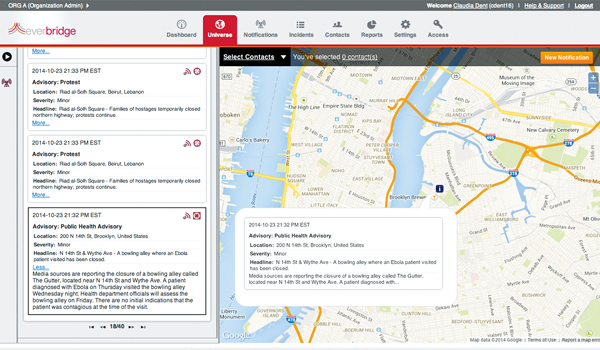Where next for ANPR?
Over the last five years, the police have increasingly exploited Automatic Number Plate Recognition (ANPR) as a crime-fighting tool. It has led to well over 50,000 arrests, including a number of high-profile murder cases and the vehicle-borne terrorist attacks on London and Glasgow. Adrian Gains of PA Consulting Group talks to Police Professional about the way forward for ANPR and the challenge of combining it with a vehicle recognition system.

Over the last five years, the police have increasingly exploited Automatic Number Plate Recognition (ANPR) as a crime-fighting tool. It has led to well over 50,000 arrests, including a number of high-profile murder cases and the vehicle-borne terrorist attacks on London and Glasgow. Adrian Gains of PA Consulting Group talks to Police Professional about the way forward for ANPR and the challenge of combining it with a vehicle recognition system.
While ANPR was originally used just to trigger real-time intercept teams, it is now increasingly used for intelligence gathering and analysis. However, one of the limitations of ANPR is that it does not capture vehicle registration marks (VRMs) with 100 per cent accuracy no system can.
For real-time intercept, this is not such a problem as the VRM can be validated by the intercept officer. For intelligence gathering and analysis it is much more of an issue. Each incorrectly read plate could fail to spot a vehicle that is actually at a location and, potentially, falsely record a vehicle as being at a location when it was not.
PA Consulting has been involved in the development and use of ANPR since its inception and as such we have maintained an active interest in thinking about new and innovative ways in which it could be developed. Essentially we believe that whilst improvements could be made technically to improve ANPR, real benefits could be driven by combining ANPR with a vehicle recognition system. This would validate that the vehicle is what it is supposed to be and would also let police search for vehicles where the VRM is unknown.
We have been running tests at our technology centre to explore the potential to develop a vehicle recognition system that was combined with ANPR. Following is what we believe are some of the key challenges, how we have begun to solve them, and what the potential applications could be. This work is at a relatively early stage but initial findings are extremely encouraging. It is clearly the way forward for ANPR.
What are the key challenges in developing a vehicle recognition system?
Principally, there are two types of challenge. The first challenge, relates to the sheer number and variety of vehicles on the roads. The second relates to the characteristics of the images themselves. Any system that claims to be able to recognise vehicles must be able to adequately cope with these challenges.
This first challenge is complex. DVLA has issued around 100 million vehicles with VRMs. Around a third of those will be currently in use on the road. There are also around 15,000 different make and models (not always uniquely identified in the DVLA database) and each of these will have a large number of colours. From time to time, models have a facelift, that is to say that they are described as the same make and model but are actually different shapes. A further complication arises when owners modify their vehicles. If this wasnt difficult enough, in a few circumstances the same vehicle shell can be badged by different manufacturers and called something different. A vehicle recognition system must be able to deal with all these complexities.
The second challenge relates to the variability of images that the system will have to deal with particularly image quality. This is a common issue with ANPR but it is exacerbated for vehicle recognition. Quality of images is critically important and this will depend on issues such as distance, camera angles (including height), lighting and weather conditions. A good system will also need to cope with both still and video, and potentially obstructed or partial images. A robust vehicle recognition system must be flexible enough to deal with a range of image sources of variable quality.
Is it possible to overcome these challenges?
Developing a system capable of solving so many challenges, on the face of it, would seem to be an intractable problem. However, PA has been working to devel



